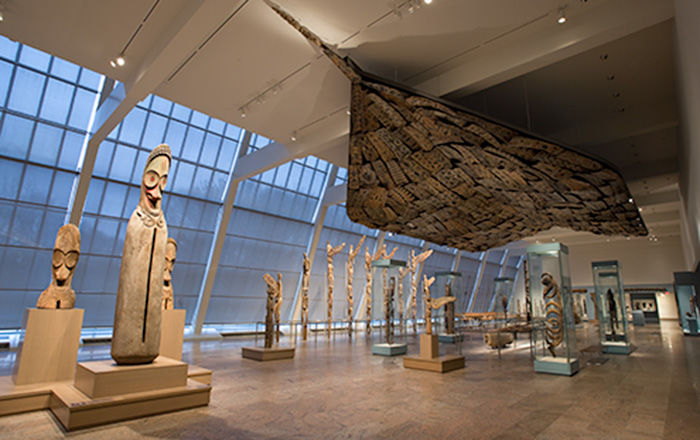Mask
Not on view
Masks were, and in some cases remain, a central element of male religious life among the peoples of the Lower Sepik region in northeast New Guinea. Dance masks, typically representing powerful spirits, were used in a diversity of ceremonial contexts, either worn directly on the face or, in many instances, attached to a larger basketry framework placed over the wearer's head. Not all types of masks, however, were intended to be worn. Many Sepik peoples produced masks or mask-like objects, which lacked eye holes and served, like carved figures, as sacred objects kept within the men's house. Small masks were also created to adorn other sacred objects, such as flutes, or were used as charms.
This image cannot be enlarged, viewed at full screen, or downloaded.
This artwork is meant to be viewed from right to left. Scroll left to view more.





